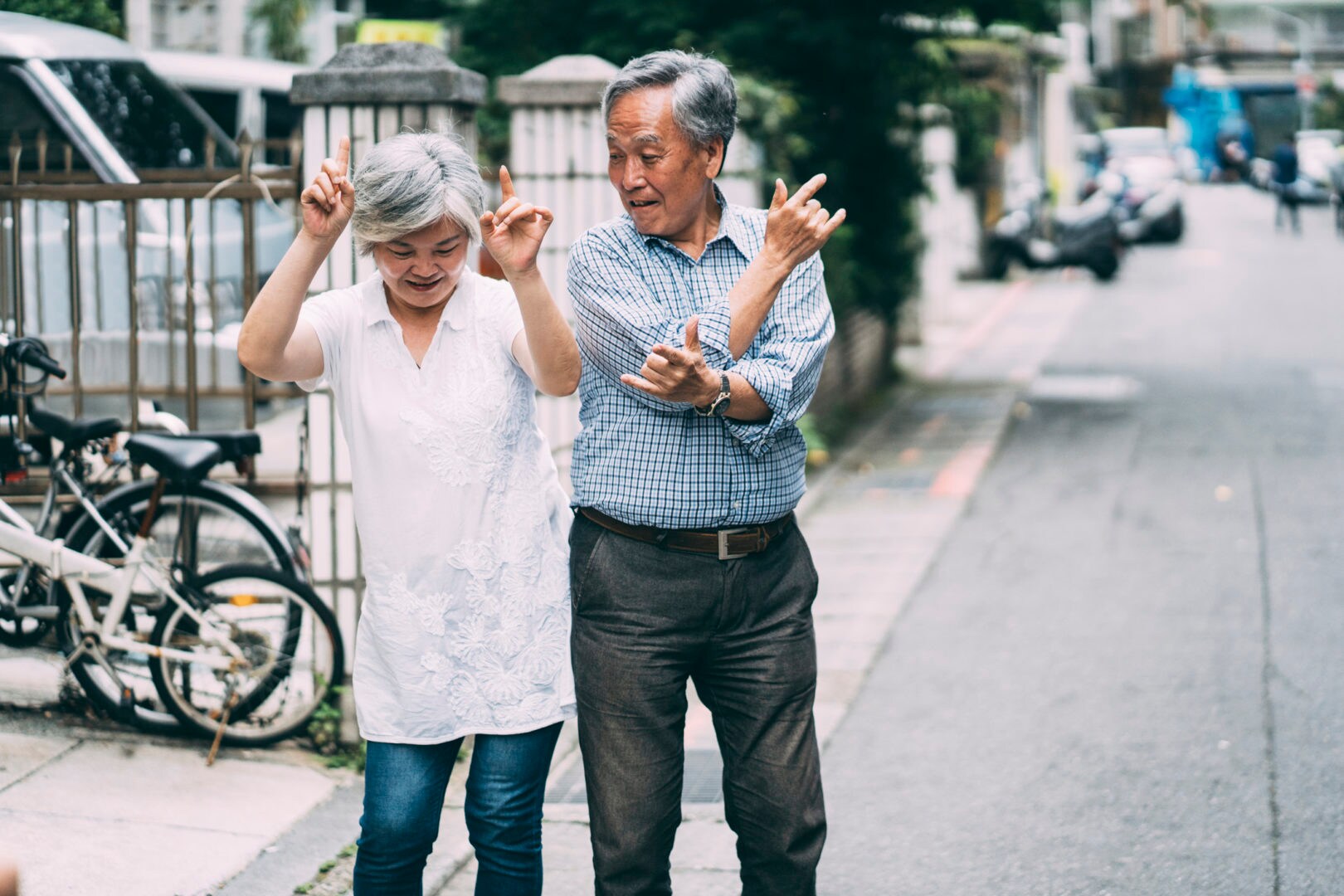While fall prevention for older adults has largely centered around techniques like removing tripping hazards from around the house and keeping up a consistent workout routine, a recent study has revealed another, more unexpected, way to keep falls at bay: dancing.
In a study published in JAMA Network Open, Swiss researchers found that taking part in dance-based, mind-motor interventions — so activities like ballroom dancing or folk dancing — helped prevent falls in adults over age 65.
Ready to help your senior loved one or client learn the latest TikTok dance? Read on for what the research shows.
What the study found
Researchers analyzed 29 clinical trials and found that for healthy adults 65 and over, dancing was associated with:
- A 37% decrease in the risk of falling.
- A 31% decrease in the rate of falls.
- Better balance, mobility and lower body strength.
They also found that dancing upwards of three times a week or more for anywhere from three months to 24 weeks offered up even more benefits.
The study authors say that mind-motor activities tap into both the physical and the cognitive and involve memory and motor control. They defined dance-based mind-motor activities as “coordinated upright mind-motor movements that emphasize dynamic balance, structured through music or an inner rhythm (e.g., breathing) and distinctive instructions or choreography, and involve social interaction.” These types of activities can be done solo (like tai chi, which was also featured in the studies analyzed), as a couple, or in a group, they say.
“The movements in dance-based, mind-motor [activities] are intentional, focused and involve the constant attention control for the shifting of body weight,” study author Michèle Mattle tells HealthDay. She also says it helps prep seniors to retain balance and bolsters their reaction time.
“We were positively surprised by the consistency of our results,” notes Mattle. “Although previous research in the field of falls prevention and exercise was suggesting that interventions, including multitasking activities, are promising falls-prevention strategies, it was unclear if dance-based mind-motor activities would lead to comparable results.”
Why the findings are so important
Each year, about one in three older adults will have a fall, according to the National Institute on Aging. And the impact can be devastating — leading to fractures to hips and bones to head injuries, says the National Council on Aging (NCOA).
Both organizations point to a variety of issues that put older adults at particular risk for falls, such as a dip in coordination and balance, weak muscles and even issues with hearing or footwear. Finding novel ways to minimize fall risk — especially an upbeat activity like dancing — is welcome news when it comes to keeping seniors safe.
More ways to help prevent falls
Whether this new research will inspire more seniors to take ballroom dancing lessons or try tai chi, being physically active in general is one way to help prevent falls. “Regular exercise improves muscles and makes you stronger. It also helps keep your joints, tendons and ligaments flexible,” says the National Institute on Aging.
Other suggestions the organization offers include making sure seniors are:
- Sleeping well.
- Have their hearing and vision checked regularly.
- Choose the right footwear (non-skid soles are key).
- Keep up calcium and vitamin D intake for bone strength.
Plus, NOCA also recommends upping at-home safety by adding additional lights around the house, rails to staircases and safety bars in the bathroom.
Ultimately, taking fall prevention into consideration can make a real difference in older adults’ continued wellness. As NOCA notes, doing whatever you can to reduce a senior’s risk of falling is a great way to help them stay healthy and independent as long as possible.




